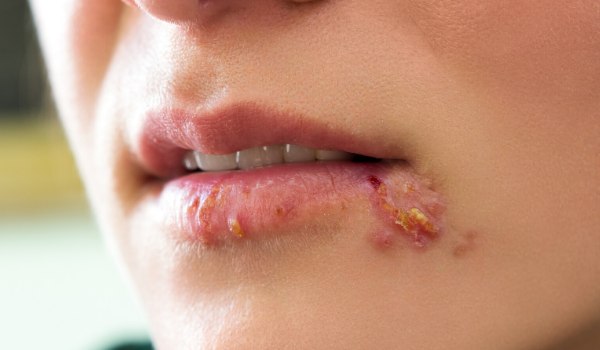You’re probably familiar with the symptoms of fever blisters: First you feel a tingling, burning or itching sensation on your lips, followed by a small, painful bump that stays with you for days. It doesn’t look good, and it feels worse. And unfortunately, once you have a fever blister, you’re also prone to future outbreaks. While you can’t stop fever blisters from occurring, you can control them. Discover what causes fever blisters and whether fever blister remedies actually work.
What are fever blisters?
Unfortunately, fever blisters are a common problem associated with the mouth. Also known as cold sores, fever blisters are small blisters that form on the lips or other areas of the face, including the cheeks, chin or nostrils. Fever blisters are caused by the herpes simplex virus, (the same virus that is responsible for genital herpes). But there are two different strands of the virus: HSV-1, which primarily causes oral herpes, and HSV-2, which is usually responsible for genital herpes. Although both types can cause fever blisters, approximately 95 percent of fever blister cases are caused by the type 1 virus.
Fever blisters are extremely contagious and are easily spread through direct contact, primarily from kissing or touching the fever blister and then touching another person. The number of people infected by the HSV-1 virus has reached epidemic proportions. In fact, it’s estimated that up to 80 percent of the nation has the virus that causes fever blisters. You may have herpes simplex type 1 and not even know it, as not everyone who carries the virus suffers from fever blister outbreaks.
Symptoms of Fever Blisters
Cold sores are often referred to as fever blisters because of their symptoms. Early symptoms may include a tingling sensation or pain around the affected area, sometimes accompanied by a fever, sore throat or swollen glands. Within a day or two you’ll develop a cluster of small, fluid-filled blisters. After they’ve fully formed, fever blisters will ooze fluid and eventually crust over until they form a scab, which should not scar if left alone. Fever blisters can last anywhere from seven days to two weeks.
What Causes Fever Blisters?
Although scientists aren’t sure why, it’s been determined that a fever blister outbreak is more likely when the body’s immune system is compromised. There are a variety of factors that can cause fever blister outbreaks, including stress, illness in the form of a cold or flu and exposure to sunlight. Children and patients with weakened immune systems are also very susceptible to fever blisters.
If you do catch the herpes simplex virus, it can take up to 20 days for fever blisters to form, if they appear at all. The first outbreak of fever blisters is usually the worst and between outbreaks, the virus remains inactive in one of your facial nerves. When triggered, it travels to your skin and breaks out into fever blisters. Not only are you contagious to others, but the virus poses more risk to you at this time. Touching your fever blister and then touching other areas of your face or body could spread the disease, which can cause such complications as genital herpes and even blindness. In rare cases, fever blisters can lead to more serious medical problems, including viral meningitis.
Fever Blister Treatment
Unfortunately, there is no cure for fever blisters. But while your fever blister runs its course, you can treat some of the fever blister symptoms. There are several topical creams on the market that can help relieve your pain, and some fever blister remedies have been proven to shorten the life of the fever blister by a day or two. If you have frequent or severe fever blister breakouts, talk to your dentist or doctor. A prescription medication may be needed to help control your fever blister outbreaks.
Preventing Fever Blisters
While fever blisters aren’t curable, they are preventable. The best way to avoid the herpes simplex virus is to not come in direct contact with someone who is experiencing a fever blister outbreak. That means no kissing or sharing utensils, cups, towels or any other item that can transfer the fever blister virus from one person to another. If you do carry the virus, there are steps you can take to limit fever blister outbreaks. Studies have shown that wearing sunscreen on your lips can prevent fever blisters from forming. It’s also been suggested, though not proven, that minimizing stress, taking the supplement L-Lysine or cutting out certain foods, such as nuts and chocolate, can also keep fever blisters at bay.
Researchers are working on a fever blisters vaccine which could be available to those who have never been infected with the virus. Regardless, an FDA-approved fever blister vaccine is still a long way off, so prevention is the best medicine when it comes to avoiding the herpes simplex virus. If you suffer from fever blisters or other mouth problems, talk to your dentist.

